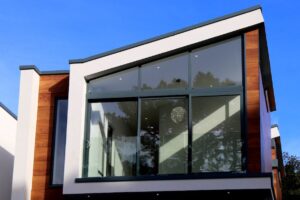Innovative Real Estate Construction Material and Techniques

“It is not the strongest of the species that survive, or the most intelligent, but the one most responsive to change.”- Charles Darwin
When Darwin suggested the survival of the fittest he was essentially referring to the ability to adapt, improve and evolve with the changing times. In these tough economic times, the success of an industry hinges upon its ability to improve cost efficiency and sustainability, which in turn, depends on the pace of innovation happening in that particular sector. Construction industry is in a dynamic phase where newer material and techniques are replacing the traditional ones in favour of better productivity and cost optimization. This trend is not specific to a country or any particular geographical area; it is more of a global phenomenon. Evidence can be found everywhere. A simple search on your local areas for builders, such as ‘builders London’, will show to loads of companies adopting this trend. You will find more and more construction companies using innovative materials.
Innovation in construction material
Throughout the 20th century construction was all about bricks, blocks, concrete and plaster. While providing for a strong and sturdy construction, these materials were reliant on aggregates and water and increased the carbon footprint. In response to the immediate need of adopting novel building material which could help in expediting the construction process, reduce wastage and enable better utilization of resources, while achieving the high standards of traditional design quality, the industry came up with some very useful alternatives. New material like Tarpaulin when used judiciously with different chemical combinations can help creating a durable structure of good quality and that costs 75% of a conventional building.
Green Construction: The way ahead
Clay roofing tiles, Bamboo, engineered wood, cork flooring and natural pigmented paints are some of the most widely used Eco-friendly construction material in vogue today. While some of these are widely available and easy to implement, others are not so easy to find and require expert guidance. Clay tiles are 100 percent recyclable, making them the ultimate Eco-friendly construction material. These are also very durable, keeping your worries about replacing or repairing damaged shingles at bay. Bamboo is one of the oldest construction material that mankind has known. From the monolithic age to the current times, bamboo has regularly found its utility owing to the plethora of benefits it holds. There are many residential projects in Tier 1 cities like Gurgaon, Bangalore that boast of green construction material. A lot of upcoming properties in DLF City Phase III are known for their futuristic designs and zero carbon footprint owing to the usage of alternative construction material.
Off-site construction and its benefits
Another paradigm shift that the real estate and construction industry is experiencing is in the construction techniques. Owing to the recent advancement in technology and consumer awareness, off-site, modular and pre-fabricated construction is gaining in acceptance. The main difference between offsite and traditional construction is in the “where” and not “how”. In modular construction, the structures are built at a location different than where it will finally reside. Individual modules of the building are manufactured in a factory and then transported and assembled at the main construction site.
The various benefits of modular construction include generation of less construction waste, reduced time for completion and fewer site disturbances. Locations where the availability of labour is less or expensive are best suited for this kind of construction. In addition, since most of the work is performed in the manufacturing facility greater amount of design accuracy can be achieved. This technique is mostly employed in rural locations and sites that have limited open space.
In India, off-site construction has flourished in parts. While most of the realty developers use modular construction techniques in some form only a marginal percentage of these developers use it on more than 50 percent of their entire project. Mohali, an industrial town of the northern India was recently in news when a developer was able to create a record for completing a superstructure assembly of a 10-story building within 48 hours.



































No comments